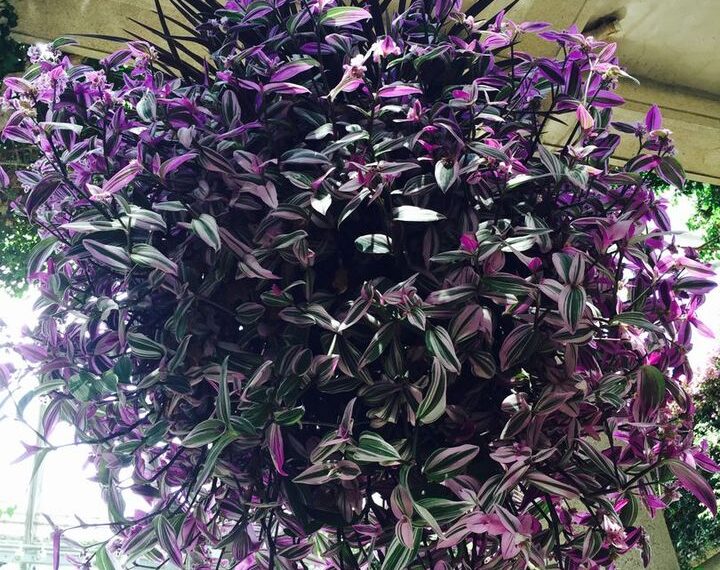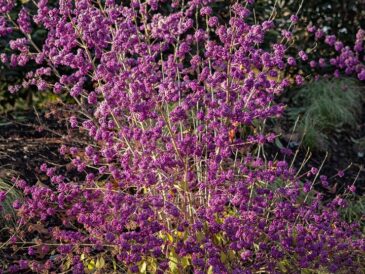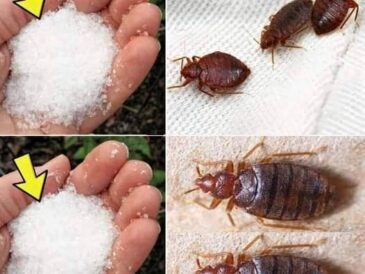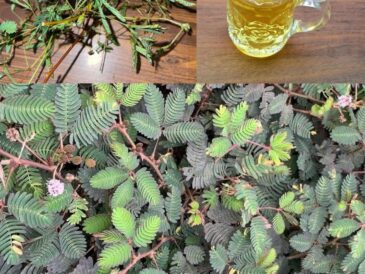6. Fertilizing
Feeding Schedule:
- Regular Fertilization: Feed your Wandering Dude with a balanced, water-soluble fertilizer every 4-6 weeks during the growing season (spring and summer).
- Reduced Feeding in Fall and Winter: Cut back on fertilization during the plant’s dormant period to prevent nutrient buildup and potential root issues.
Fertilizer Tips:
- Diluted Solution: Always dilute the fertilizer to half the recommended strength to avoid over-fertilizing.
- Organic Options: Consider using organic fertilizers like compost tea or diluted fish emulsion for a natural nutrient boost.
7. Pruning and Propagation
Pruning for Health and Shape:
- Regular Trimming: Trim back leggy stems and remove any yellowing or damaged leaves to encourage bushier growth and maintain the plant’s appearance.
- Deadheading: Remove spent or dead blooms to prevent energy from being wasted on flower production.
Propagation Methods:
- Stem Cuttings: Tradescantia zebrina propagates easily through stem cuttings. Here’s how:
- Select a Healthy Stem: Choose a healthy, non-flowering stem.
- Cut Below a Node: Make a clean cut just below a leaf node using sterilized scissors or pruning shears.
- Remove Lower Leaves: Strip off the lower leaves to expose the nodes.
- Rooting: Place the cuttings in water or directly into moist potting soil. If using water, change it every few days until roots develop, then transplant into soil.
- Division: Occasionally, you can divide the plant at the roots to create multiple new plants, ensuring each section has ample foliage and healthy roots.
8. Pest and Disease Management
Common Pests:
- Spider Mites: Tiny pests that cause stippling and webbing on leaves. Control with neem oil or insecticidal soap.
- Aphids: Small, sap-sucking insects that can cause distorted growth. Use a strong spray of water or neem-based treatments to eliminate them.
- Mealybugs: White, cotton-like pests that infest the plant’s joints. Remove them with a cotton swab dipped in alcohol or apply neem oil.
Disease Prevention:
- Overwatering Prevention: Ensure proper drainage to avoid root rot and fungal diseases.
- Good Air Circulation: Provide adequate airflow around the plant to reduce the risk of mold and mildew.
- Clean Leaves: Wipe leaves regularly with a damp cloth to remove dust and prevent pest infestations.
9. Repotting and Pot Selection
Choosing the Right Pot:
- Size: Select a pot that is 1-2 inches larger in diameter than the current pot to give the roots room to grow.
- Material: Terracotta or ceramic pots are excellent choices as they allow for better airflow and moisture evaporation compared to plastic pots.
Repotting Steps:
- Prepare the New Pot: Fill the bottom with a layer of fresh potting soil.
- Remove the Plant: Gently slide the plant out of its current pot, being careful not to damage the roots.
- Inspect the Roots: Trim any dead or rotting roots and loosen any compacted soil.
- Place in the New Pot: Position the plant in the new pot, filling in around the roots with fresh soil.
- Water Thoroughly: After repotting, water the plant well to help settle the soil and reduce transplant shock.
10. General Tips for Thriving Wandering Dude Plants
- Rotate Regularly: Turn your plant every few weeks to ensure even growth and prevent it from leaning towards the light source.
- Avoid Direct Sunlight: While bright indirect light is essential, direct sunlight can scorch the leaves. If leaves turn yellow or brown, it might be getting too much light.
- Keep Humidity Consistent: Sudden drops or spikes in humidity can stress the plant. Maintain a stable environment to promote healthy growth.
- Monitor for Changes: Regularly check your plant for any signs of stress, pests, or disease. Early detection and intervention are key to maintaining a healthy Wandering Dude.
Conclusion
Caring for a Wandering Dude (Tradescantia zebrina) involves understanding its specific needs regarding light, water, soil, and overall environment. By providing the right conditions, regular maintenance, and prompt attention to any issues, your Tradescantia can thrive, displaying its beautiful variegated leaves and trailing stems for years to come. Whether adorning a windowsill, hanging in a basket, or cascading from a shelf, this versatile plant is a delightful addition to any indoor garden.
By following these detailed care tips, you’ll ensure your Wandering Dude remains a vibrant and healthy centerpiece in your home, bringing both beauty and air-purifying benefits to your living space.




